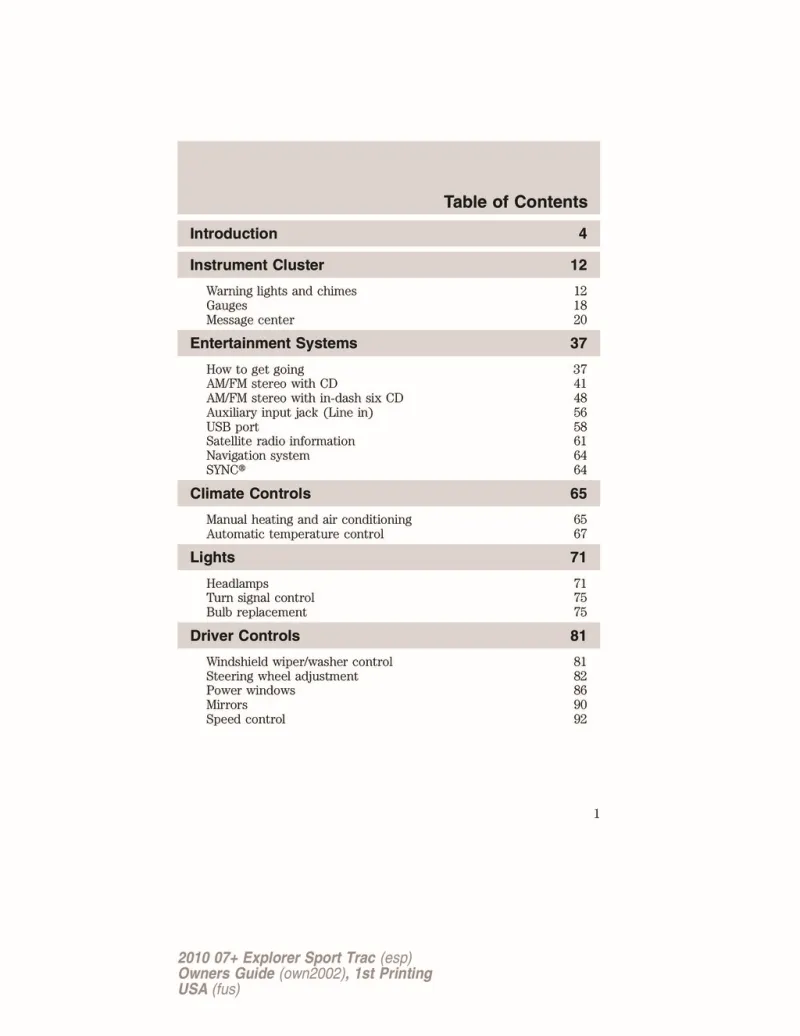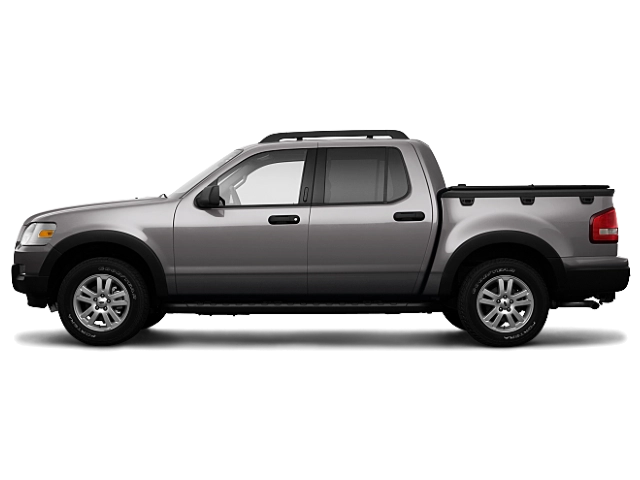2010 Ford Explorer Sport Trac Owner's Manual

Table of Contents
2010 Ford Explorer Sport Trac Overview
Introduction
Introducing the 2010 Ford Explorer Sport Trac, a versatile midsize SUV that combines the comfort of an SUV with the practicality of a pickup truck. Known for its rugged capability and adaptive design, the Explorer Sport Trac is perfect for those who seek adventure without sacrificing daily driving needs. This unique vehicle offers a spacious interior, strong performance, and a host of features that enhance both convenience and safety.
Powertrains
The 2010 Explorer Sport Trac comes equipped with a potent 4.0-liter V6 engine that delivers an impressive 210 horsepower and 254 lb-ft of torque. This powertrain is paired with a five-speed automatic transmission, ensuring responsive shifting and optimal performance. For those seeking more power, Ford offers an optional 4.6-liter V8 engine that generates 292 horsepower and 300 lb-ft of torque, providing excellent towing capabilities and off-road performance. With both 2WD and 4WD options available, drivers can choose the configuration that best suits their lifestyle.
Trims
The Sport Trac is available in three well-equipped trims: XLS, XLT, and Limited. The XLS trim provides essential features, making it an excellent choice for budget-conscious buyers. The XLT adds extra conveniences such as premium audio and alloy wheels, while the Limited trim boasts high-end amenities, including leather seating, a sunroof, and advanced technology options. Each trim caters to different preferences, ensuring that every driver finds the perfect fit.
Features
Standard features on the 2010 Explorer Sport Trac include full power accessories, air conditioning, and a tilt steering wheel. Higher trims incorporate additional elements like a premium sound system, navigation, and advanced safety features like stability control and multiple airbags, promoting peace of mind for both driver and passengers.
Owner's Manual
The 2010 Ford Explorer Sport Trac owner's manual is a comprehensive guide designed to assist owners in understanding their vehicle. It covers essential topics such as maintenance schedules, troubleshooting tips, and operational instructions for various features and systems. This manual serves as a valuable resource for maximizing vehicle performance and longevity.
User manual download
The Ford Explorer Sport Trac owner manual for the 2010 model year is to be found in PDF downloadable format on this page. The owner manual for the model year 2010 is free and in English, but the repair manuals are usually not easy to get and may cost more.
Manual Questions
Fill the form below and someone will help you!

